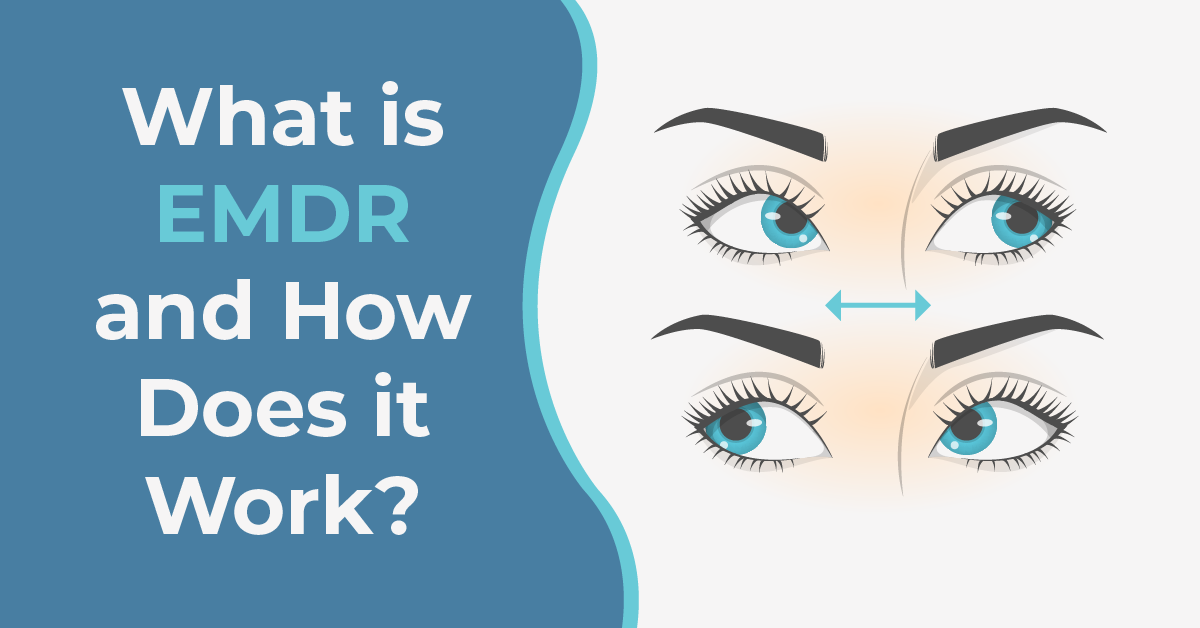June 30th, 2021

By now you may have seen the recent interview of Prince Harry, Duke of Sussex, with Oprah Winfrey for their docuseries “The Me You Can’t See,” where he discusses—and even participates in a demonstration—of the psychotherapeutic technique known as Eye Movement Desensitization and Reprocessing or EMDR.
In the interview, Harry shares his reasons for wanting to try this technique, explaining, “One of the biggest lessons I’ve ever learned in life is you’ve sometimes got to go back and deal with really uncomfortable situations and be able to process it in order to be able to heal.” He goes on to explain how therapy— EMDR in particular—has helped him to heal from the trauma of his mother’s death.
At this point, you may be wondering how EMDR works, and whether or not it could help you as well, so let’s cover some basics.
In the beginning steps or ‘Phases’ of EMDR, the therapist thoroughly explains the process and answers questions, and then gets the client’s full social history, including the basics about the trauma or difficult experiences the client would like to process.
Then, before processing the most distressing memories directly, the therapist will help the client to practice ‘resourcing.’ Resourcing is the practice of visualizations and grounding skills the client can use on their own, to help with mastering their own ability to manage triggering stimuli when they encounter it, both in and outside of the therapy session.
Next, if you watched Prince Harry’s interview, you noticed that throughout the treatment, he was rhythmically tapping himself on alternating shoulders. This is one example of a key aspect of EMDR: Dual Attention Stimuli (or DAS).
Another form of DAS includes the therapist moving their fingers back and forth while the client follows the movement with their eyes, which is where the treatment gets its name.

Similar to psychodynamic approaches to therapy, EMDR utilizes a form of ‘free association,’ or the client’s ability to notice and report whatever they observe during the DAS, without editing. The therapist is actually relatively quiet during this phase, providing slight direction and encouragement when helpful, but otherwise allowing the process to unfold within the client’s own mind and body.
It is believed that remembering not just the factual details, but also the emotions and bodily sensations of the memory while engaging in DAS, allows the client to ‘reprocess’ the experience using different parts and functions in the brain, beyond just where the trauma has been originally stored. This, in turn, allows the client to move beyond their current, seemingly stuck, experience of the traumatic memory.
I’ve heard this likened to a skip in a vinyl record—remembering the trauma can feel as if our ‘needle has gotten stuck’ on the skip in the record—we keep having the same distressful response, even if the trauma has fully passed. EMDR can help us to smooth out the skip in the vinyl so that we can move on to the rest of the song.

Research supports that DAS, combined with all of the Phases of treatment, can lead to a significant reduction in the level of distress clients experience when recalling a traumatic memory, or when encountering fears, or even anxiety-provoking thoughts.
Theories as to why this is range from DAS stimulating various parts of the brain involved in processing tangible experiences, to stimulating our ‘orienting response’—a reflex that draws our attention to new stimuli and processing new information. It is also believed that DAS simulates the process involved in REM sleep.
While the exact process is yet to be fully uncovered, studies overwhelmingly show a significant change in brain functioning with EMDR, and this mirrors the significant change in distress levels associated with the memories, as reported by recipients of the treatment.
EMDR began as and is most commonly utilized in treating responses to traumatic memories. While much of the clinical research pertaining to the effectiveness of EMDR revolves around PTSD and other anxiety disorders, International Association for EMDR (EMDRIA) explains that clinicians have had great success in using this technique to treat many diagnoses, from depression to substance abuse and eating disorders.
This is likely because many psychological disorders do evolve from or have some roots in difficult experiences that get ‘stored’ in the body, leading to chronic anxiety, or other symptoms of mental health disorders, addictions, etc.
In the docuseries, Prince Harry details how, through therapy, he came to an understanding of the ways in which his mother’s death, and its complex impact on his childhood, led to his own struggles in emotional functioning. He discusses the impact of EMDR in processing difficult memories for him, “It’s like, every time something comes up, woosh, we’re done with that.”
Here he mirrors what so many clients who have undergone EMDR treatment have spoken of: a sense of calm, self-compassion, and even increased self-confidence that it is possible to move beyond a trauma response when we can facilitate our mind’s ability to heal itself.
Written By: Jessica Masbaum, LCSW
At Clarity Clinic, we have highly trained staff who specialize in psychotherapy and psychiatry services. To learn more about how we can support your mental health, call Clarity Clinic at (312) 815-9660 or schedule an appointment today.
Our Services
Virtual/Online CarePHP and IOPAdult PsychiatryChild & Adolescent PsychiatryAdult TherapyChild & Adolescent TherapyCouples CounselingFamily TherapyGroup TherapyPsychological TestingTranscranial Magnetic Stimulation (TMS)